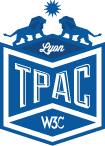Effective way to promote products and services
For many businesses and institutions, having a Facebook page is an
effective way to promote their products and services, and can
significantly expand their network. Getting tons of fans on Facebook is
easy, if you just follow some of these simple ideas.
First off, start with what you already have. Click on the "Suggest
to Friends" button and invite friends from your original profile. The
number of fans you will get from this method depends mainly on the
number of friends that you actually have and your relationship with
them. Aside from this, you should also invite your e-zine and e-mail
subscribers. Send out an e-mail to your subscribers informing them of
your fan page, and place a logo of Facebook in your newsletters.
Get the people who regularly visit your site to go to your Facebook
fan page by embedding eye-catching things on your website. Choose from a
number of widgets that you can embed on your site, such as the Fan Box
widget, where you can display your page stream and some fans, or the
Live Stream widget, which fans can use to send comments in real time.
You can also load nice videos on your Facebook page and embed them on
your website or your blog. The video serves as a link to your Facebook
fan page.
People are attracted to unique and interesting material. A great way to
get more people to check out your Facebook page and like it is to add
interesting stuff on your fan page. Make your fan page unique by
uploading an attractive welcome video on your main canvas page. Here,
you can share what your page is about and why people should "Like" it.
There are also a number of Facebook applications that you can try adding
to your page to make it more appealing, such as Vpype, a live
video-streaming application where you can air Internet shows directly
from your page. There are also several companies that create custom
Facebook applications, depending on what you want.
After doing this you post interesting updates, articles and news
relevant to your business on your Facebook, so that people who are added
in your list get the post and are forced to comment on your profile. By
doing this the user who will comment on your profile will in return
automatically post your comment to all users in his profile. This will
notify more users about your existence and you will end up getting more
people in your network.
Don't forget to link, link, link. Make sure you add a link on your
personal profile page that will direct your visitors to your Facebook
fan page. Place your fan page’s URL right below your profile picture, on
the "Write something about yourself" area, so that it will be easily
visible to friends who visit your page. You can also link your fan page
to other sites, such as Twitter. Your Facebook updates will
automatically get posted to your Twitter account, and you can also
promote your fan page on your background and Twitter bio field.
Above are the ways of doing it but the most important thing is that
you keep on posting on your Facebook profile. You have to be very active
on Facebook. An active profile is the key to attracting more and more
users.
These are only a few of the things you can do to increase your Facebook fans. Try them out!
Source:
www.isnare.com


